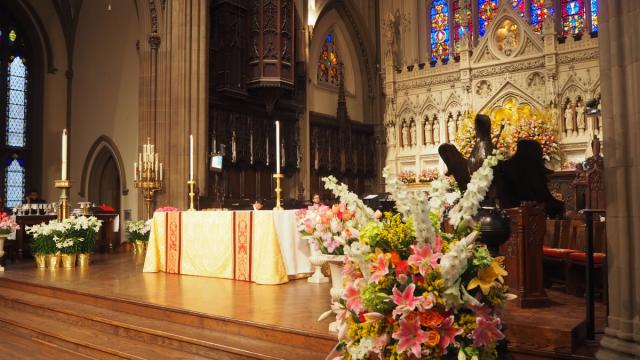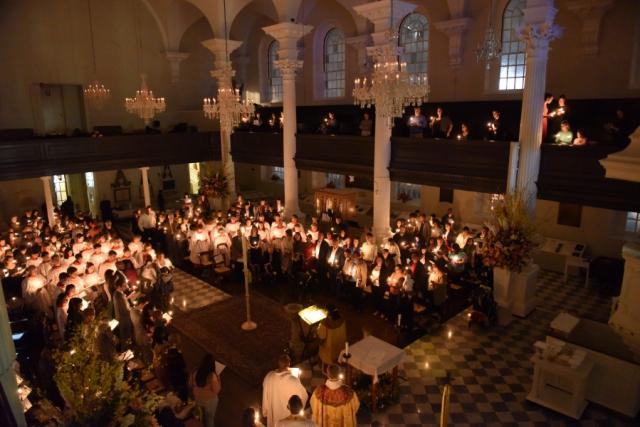What is Eastertide?
Although many people are familiar with Easter Day, when the Church celebrates the resurrection of Jesus, you may not know that it always falls on the first Sunday after the first full moon on or after March 21. This was determined in 325CE at the Council of Nicaea in attempt to have all Christians celebrate on the same day (with limited success, since Orthodox Christians use a different calendar). And you may not know that Easter season (Eastertide) lasts for 50 days.
During this time Episcopalians once again use the word alleluia, which they refrain from using during the penitential season of Lent, and the confession is omitted from the liturgy. The church also uses white (and sometimes gold) vestments, which is the color designated for feasts and festivals.
The Paschal Candle is lit on Easter and on Sundays during Eastertide. It is a large candle that symbolizes the risen Christ, often decorated with a cross. Paschal means “related to Easter or Passover,” which is why Eastertide is sometimes called Paschaltide, and Jesus is sometimes called the “Paschal Lamb.”
The Paschal candle in the center of St. Paul's Chapel during the Easter Vigil.
Eastertide ends on the Day of Pentecost, which celebrates when the Holy Spirit descended on the disciples in the form of tongues of fire. The word Pentecost means “fiftieth day” in Greek.
So for the next few weeks, you may still hear some Episcopal priests exclaim “Alleluia! Christ is Risen!” on Sunday mornings, to which the people reply, “The Lord is risen indeed. Alleluia!”







